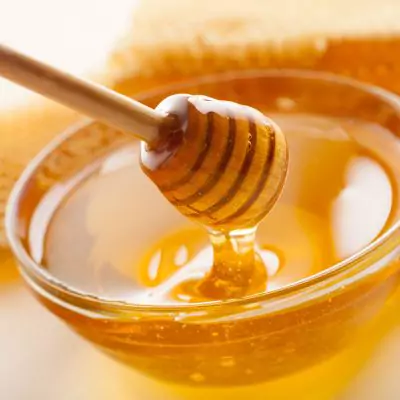On This Page
Overview
Several leafy greens are there. We have heard numerous times about the advantages of including them in our diets. While vegetables like kale, spinach, lettuce, and fenugreek are well-known, amaranth, sometimes known as “chaulai,” has fallen out of favor. Amaranth, which resembles spinach in appearance, is primarily found in the Himalayan foothills. They are available in a range of colors, including gold, red, green, and purple. Amaranth seeds were once a common ingredient in the diets of numerous people. When the health advantages of amaranth seeds were discovered, their popularity had returned a few years earlier, and they had since gained the importance of being a superfood.
Synonyms of Amaranth
- Rajgira
- Ramdana
- Amaranthus Viridis
Nutritional Facts of Amaranth
A quarter-cup serving of dry, uncooked amaranth contains:-
| Calories: | 179 |
| Protein: | 7 grams |
| Fat: | 3 grams |
| Carbohydrates: | 31 grams |
| Fiber: | 3 grams |
| Sugar: | 1 gram |
Phytochemical Constituents of Amaranth
- Flavonoids
- Phenolic and proanthocyanidin
Therapeutic Uses of Amaranth
- Gluten-Free Food
For those who are gluten sensitive or intolerant, that is wonderful news. The main symptoms of gluten sensitivity are a collection of reactions to a protein found in the wheat plant (and that protein is gluten). Celiac disease, a serious intestinal disorder, is the most severe form of gluten intolerance. Amaranth doesn’t contain gluten, so you can comfortably eat it as part of a gluten-free diet.
- Helps Weight Loss
Amaranth contains a lot of protein and fiber, both of which aid in weight loss. A high-protein breakfast helps lower ghrelin levels, which is the hormone that makes you hungry, according to research. Amaranth’s fiber travels through the digestive system slowly and undigested, which aids in fostering a sense of fullness. Increased fiber consumption reduces the likelihood of gaining weight and body fat.
- Fight Inflammation
Amaranth is an excellent anti-inflammatory agent. Furthermore, it alleviates inflammatory diseases including gout and arthritis.
- Promotes Growth of Muscles
One of the most effective strategies to keep our bodies toned, set, and in good working order is to include protein in our diet. Amaranth grain is a fantastic addition to the diet if one wants to ensure the proper growth of cells, muscles, tissues, and skin because of the extremely high levels of plant proteins it contains.
- Enhances Vision
Vitamin A, found in amaranth, is proven to enhance vision. The vitamin helps with vision in low-light situations and guards against night blindness (induced by a vitamin A deficit).
Additionally, the amaranth leaf has a lot of vitamin A, which might improve vision.
- Combats Anemia
Due to its high iron content, amaranth can help treat anemia, which is brought on by an iron deficiency. So you can add amaranth to your diet to help to combat anemia.
- Easy to Digest
Amaranth leaves are given to people who are recovering from illness or who are fasting because they are gentle on the stomach. Diarrhea and hemorrhages can be treated with amaranth leaves. Digestion has been shown to benefit from regular ingestion.
Home Remedies of Amaranth
- Clear skin
Amaranth oil can also act as an effective cleaner and prevent premature balding. Before taking a bath, all you need to do is massage a few drops of the oil into your face.
- Benefits the stomach
Whether you eat amaranth as a cereal or as leaves, it is one of the greatest foods for your stomach. It has soluble and insoluble fiber, which binds to food in your intestines and makes it easier for it to pass through. Together, these two fibers guard you against issues like constipation and irritable bowel syndrome.
- Control hair loss and graying
Juice from the leaves can also be applied topically to stop falling out of brittle hair. Amaranth leaves’ outstanding aesthetic value also delays the start of premature graying.

Have A Health Issue?
Consult Online
- Dr. Sahil Gupta (B.A.M.S., M.H.A.)
Ayurvedic Allergy Specialist
CEO & Founder of IAFA®
Ayurvedic Aspects of Amaranth
Amaranth is a grain that is healthy, free of gluten, and high in protein. Ayurveda claims that it intensifies Pitta and Kapha dosha. The herb is potently cold and has a sweet flavor. Proteins, carbohydrates, healthy fats, phosphate, iron, selenium, manganese, and copper are all abundant in amaranth. It contains antiproliferative, antioxidant, hepatoprotective, astringent, diuretic, emollient, digestive, and carminative properties.
Daily Dose: Amaranth leaves :100 g of amaranth leaves per day is the suggested serving size.
Amaranth Grain: The daily suggested serving size is 246 grams of cooked amaranth.
Side Effects of Amaranth
Amaranth has no recognized negative effects. You cannot, however, take as much as you please. Don’t eat more or less than usual. And when it comes to pregnancy and breastfeeding, the information is insufficient. So be careful and abstain from use.
Conclusion
The advantages of amaranth are numerous. Protein, fiber, and antioxidants are all abundant in it. Celiac disease sufferers can eat this gluten-free grain. Additionally, it reduces blood sugar levels, strengthens the heart, reduces inflammation, fights cancer, and strengthens the immune system. It can even be used to hydrate the skin, take off makeup, and brush your teeth. Amaranth doesn’t have any known adverse effects, but there isn’t much available regarding how much of it to take. Therefore, before consuming amaranth, talk to your health experts. If you suffer from any allergy due to amaranth, you can consult Dr. Gupta at IAFA he provides an herbal cure for any adverse effect or allergy.
References
- Cytotechnology: “Amaranth Grain Inhibits Antigen-Specific IgE Production Through Augmentation of the IFN-gamma Response in Vivo and in Vitro.”
- https://www.nature.com/articles/s41598-019-49276-w#:~:text=Total%20flavonoids%2C%20phenolic%20and%20proanthocyanidin,nitric%20oxide%20and%20phosphomolybdate%20assays.









